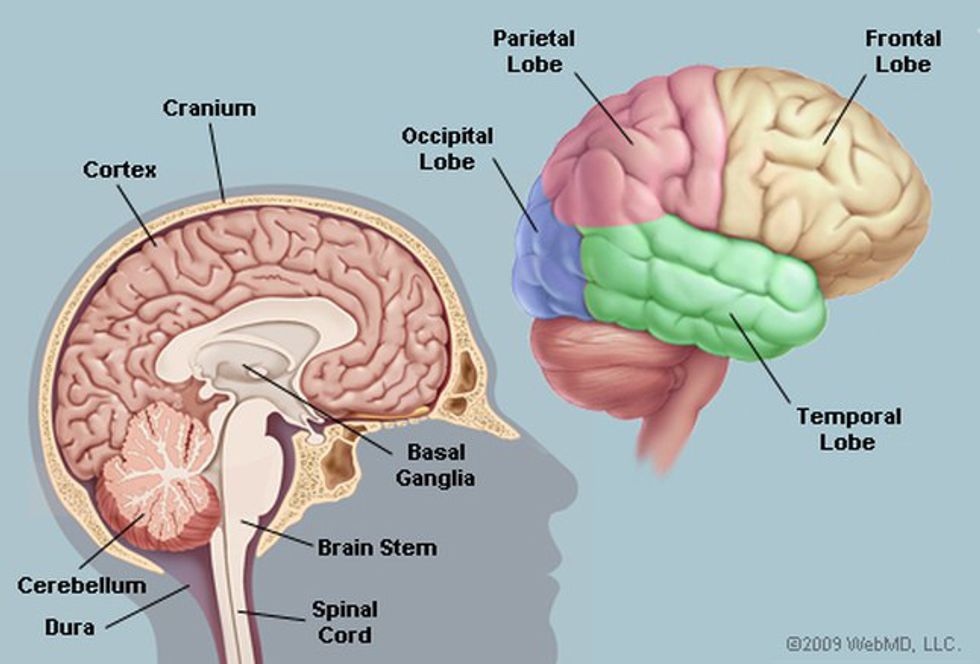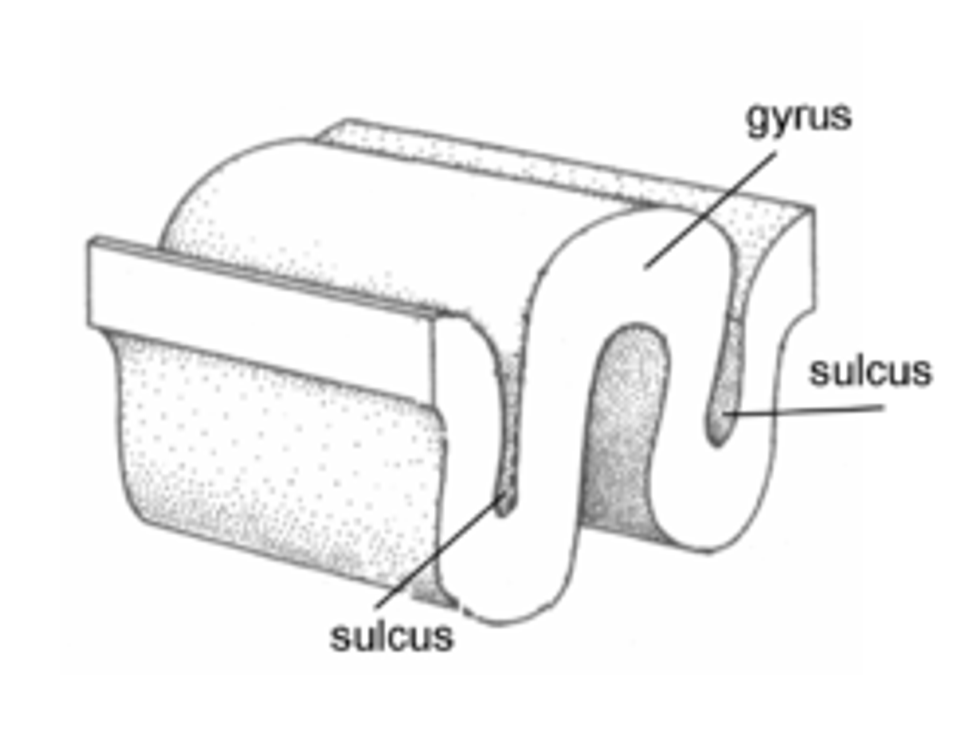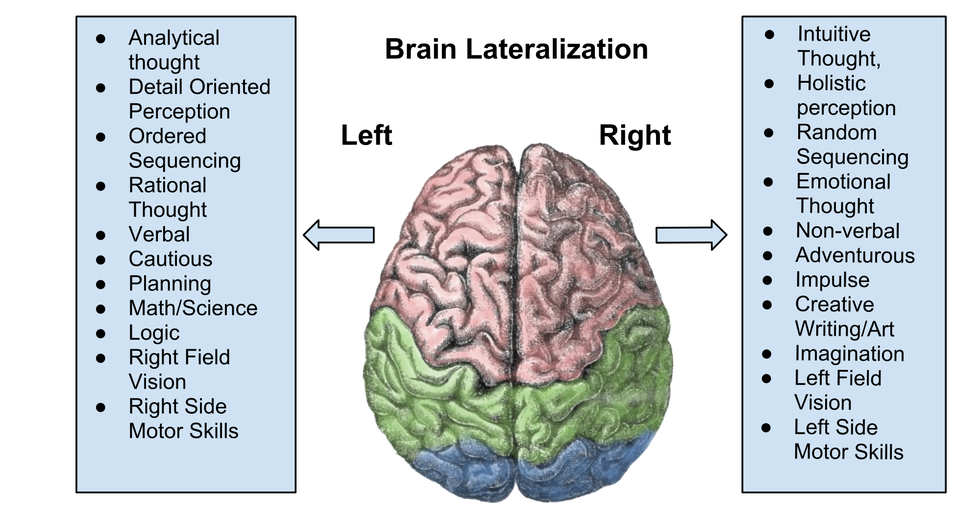I am a huge fan of the brain. HUGE. I have taken neuroscience classes, read books on the topic, gotten a scan of my own brain done. I’ve even had the remarkable opportunity to hold and study 10 real-life brains, each different, some healthy, some impaired. The brain accounts for our movements, words, perception, consciousness, emotions… The list goes on and on. It is responsible for Mozart’s music, the development of NASA, theories of relativity and quantum mechanics, and even the climb up Mt. Everest, which is arguably more demanding of mental than physical strength. Because I am such a (HUGE) fan of this vital organ, I’ve decided to provide a crash course on the topic:
This is the brain, labeled and color-coded:
Cranium: AKA skull; protects the brain from injury (brain’s “helmet”)
Cortex: outermost layer of brain cells; thinking/ voluntary movements begin here; often referred to as “gray matter” (more on this later)
Brain Stem: basic functioning (e.g. breathing)
Basal Ganglia: coordinate messages between multiple other brain areas
Cerebellum: coordination and balance
Gray matter: “outer brain;” no myelination
White matter: “inner brain;” white because of myelination (sheath of fatty molecule which speeds up neuronal transmission)
Gyrus: the ridge or “bump”
Sulcus: the fissure; the part that “sinks”
The brain is made up of 100 billion+ nerves that connect in combinations of ways to communicate information. These connections are called synapses.
NERVE:
Dendrites: receive information from synapse and send it to the cell body;
Cell Body: AKA soma; contains nucleus
Axon: receives information from the cell body and transmits it to the nerve ending;
Nerve Ending: AKA terminals; release electrical impulse of presynaptic cleft
FUN FACT: Nerves are overproduced. After we are born, we begin learning about the world and use the nerves in our brain; however, those not used, are eventually eliminated. This “use it or lose it” process is called pruning.
* * * * *
Frontal Lobe: problem solving; planning; judgment; motor functioning
Parietal Lobe: sensations (e.g. taste of food); handwriting; reading; math
Temporal Lobe: hearing; memory
Occipital Lobe: visual processing
The brain is split into two hemispheres—the Left and the Right
Left: language; logic
Right: creative; abstract reasoning skills
Funnily enough, the left hemisphere controls the right side of the body and vice versa. This is often visible in stroke patients. If damage is done to the right hemisphere, for example, the left side of the body will be affected.
* * * * *
So there you have it, folks. The brain is obviously way too cool to be this simple. BUT, knowing the above information will set you up with the right tools to delve deeper into the brain and study it more extensively.






















